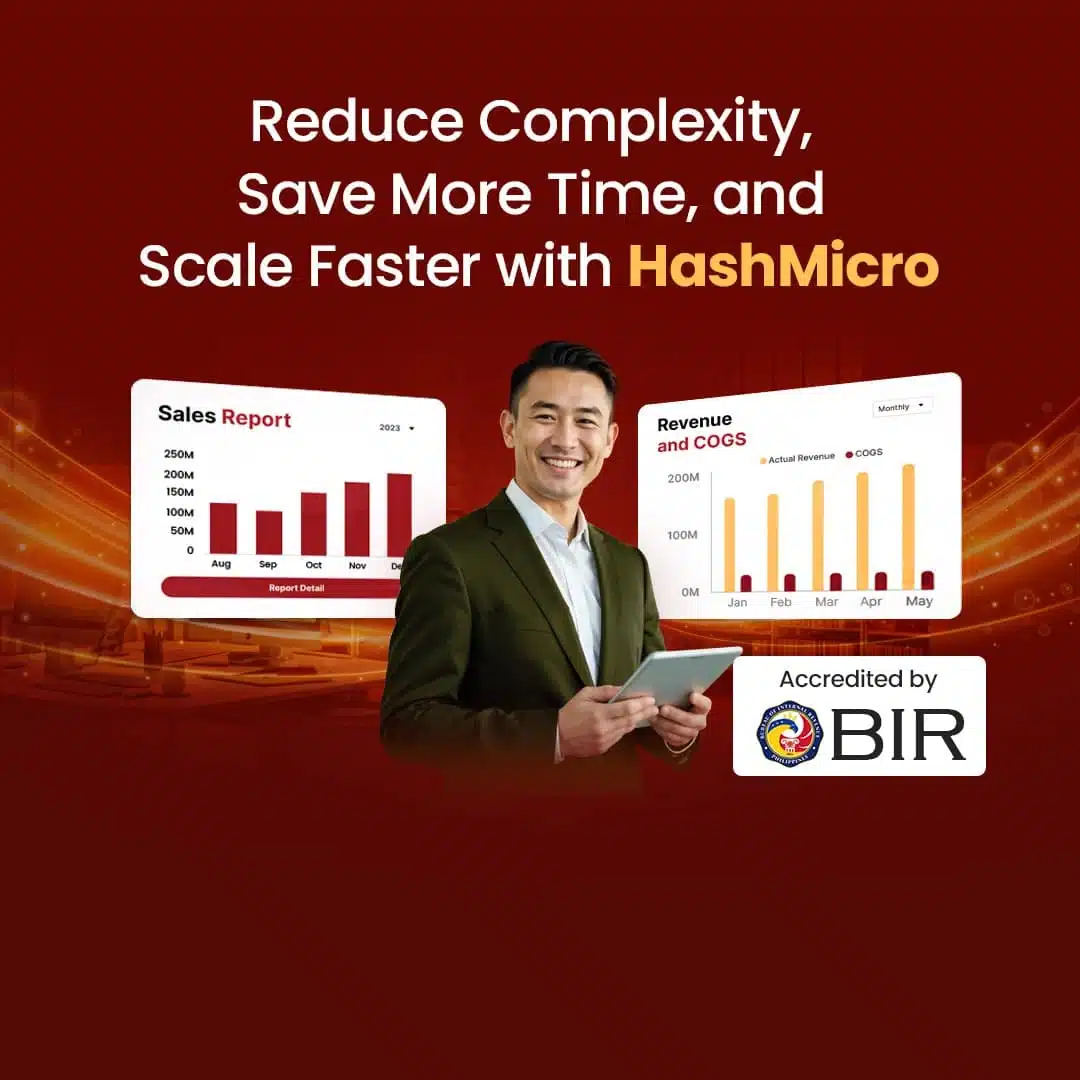As businesses in the country strive for seamless connectivity and efficiency in their operations, leveraging Integration Platform as a Service (iPaaS) has become increasingly crucial.
iPaaS provides a cloud-based solution for enhanced ERP system integration, enabling businesses to bridge the gap between disparate systems and databases. With iPaaS, you can simplify and accelerate your ERP systems’ integration process, leading to improved operational efficiency and productivity.
Whether you’re a small-scale enterprise or a large corporation, integrating ERP systems is essential for maximizing your business’s potential. By leveraging iPaaS, you can unlock new levels of connectivity, automation, and efficiency. Join us as we dive into the world of iPaaS and discover how it can transform your Enterprise Resource Planning integration journey in the Philippines.
Table of Contents
Understanding Integration Platform as a Service (iPaaS)
Integration Platform as a Service (iPaaS) is a cloud-based solution that enables seamless integration between different systems and databases. With iPaaS, businesses can build and deploy integrations without the need for hardware management. This streamlined approach simplifies the integration process and eliminates the complexities associated with traditional integration approaches.
iPaaS offers several advantages over traditional integration methods. Firstly, it provides a scalable and flexible solution, allowing businesses to easily adapt to changing integration needs. The cloud-based nature of iPaaS also reduces the burden of IT infrastructure management, allowing organizations to focus on their core business operations.
Additionally, iPaaS offers pre-built connectors and templates that facilitate the integration process, saving time and effort. This enables businesses to accelerate their integration projects and quickly achieve the desired outcomes. Moreover, iPaaS provides a centralized platform for managing and monitoring integrations, ensuring data consistency and security.
By leveraging iPaaS, businesses in the Philippines can enhance their ERP system integration capabilities, improving overall efficiency and productivity. iPaaS provides a cost-effective and efficient solution for integrating different systems and databases, enabling seamless data flow and automation of business processes.
In the next section, we will delve into the core functionalities of iPaaS and explore its role in bridging the gap between disparate systems, resulting in efficient and connected business operations.
The Core of iPaaS
Before the advent of advanced cloud-based solutions like Integration Platform as a Service (iPaaS), businesses often relied on point-to-point integration to connect disparate systems. This traditional method involved direct connections between systems, databases, or applications to facilitate data exchange.
However, while point-to-point integration could be effective for limited use cases, it posed significant challenges in terms of scalability, complexity, and maintenance, especially as the number of integrations increased. Transitioning from these traditional methods, the world of enterprise automation now embraces iPaaS. This innovative platform plays a vital role in overcoming the limitations of point-to-point integration by providing a more scalable, flexible, and efficient solution for bridging the gap between various applications and databases, thereby enabling seamless data flow and connectivity..
Connecting the Dots: Bridging the Gap Between Systems
iPaaS serves as a catalyst in connecting various systems and applications, irrespective of their individual specifications and protocols. It achieves this by leveraging connectors, data mapping, and synchronization techniques.
Connectors act as intermediaries between systems, enabling the exchange of information and data flow. They facilitate the seamless integration of different software applications, databases, and APIs, creating a unified ecosystem, which otherwise would have required extensive coding and customization.
Data mapping is another crucial aspect of iPaaS, where it helps in harmonizing and aligning data formats and structures between different systems. This ensures that data is accurately transferred and interpreted, allowing for smooth interoperability.
Synchronization is the mechanism that ensures real-time data updates between integrated systems. iPaaS synchronizes data across multiple applications, ensuring consistency and coherence in the enterprise ecosystem.
Through these core functionalities, iPaaS eliminates the challenges of system incompatibilities and allows for efficient data transfer, enabling seamless workflows between different parts of an organization.
Key Capabilities and Functionalities of iPaaS
iPaaS offers a wide range of capabilities and functionalities that empower businesses to streamline their operations and optimize their data integration processes. Some of the key capabilities include:
- Data integration: iPaaS enables the efficient integration of data from various sources and systems, creating a unified view of information across the organization.
- Workflow automation: With iPaaS, businesses can automate their workflows, reducing manual intervention and improving efficiency in processes.
- Real-time analytics: iPaaS provides real-time insights and analytics, empowering organizations to make data-driven decisions and respond promptly to changing business needs.
- Cloud-based deployment: iPaaS solutions are hosted in the cloud, eliminating the need for extensive hardware management and maintenance.
- Scalability: iPaaS offers scalability, allowing businesses to easily expand their integration capabilities as their needs grow.
These capabilities empower businesses to achieve seamless connectivity, optimize their operations, and drive digital transformation.
iPaaS and Business Efficiency

In today’s fast-paced business landscape, operational efficiency is crucial for organizations seeking to stay competitive. This is where iPaaS (Integration Platform as a Service) comes in. By automating business processes, eliminating manual tasks, and improving productivity, iPaaS enhances operational efficiency and drives business success.
iPaaS frees up valuable time and resources for your team to focus on more strategic activities. This not only improves productivity but also reduces errors and delays, leading to smoother operations across different departments and systems.
ERP systems serve as the backbone of many businesses, managing critical functions such as finance, human resources, and supply chain management. However, integrating ERP systems with other applications and databases can be complex and time-consuming.
iPaaS bridges this gap by enabling seamless data flow, synchronization, and automation between ERP systems and other business applications. It eliminates the need for manual data entry and ensures that information remains consistent and up-to-date across different systems.
By integrating ERP systems with iPaaS, businesses can effectively manage their enterprise-wide operations and processes. This results in improved efficiency, streamlined workflows, and better decision-making capabilities. If you’re looking for the best ERP system in the Philippines, you can try HashMicro ERP system by downloading the price scheme below.

Benefits of Adopting iPaaS
In today’s fast-paced business landscape, agility and scalability are key factors in staying competitive. Adopting an Integration Platform as a Service (iPaaS) offers numerous benefits that can help businesses thrive in the dynamic business environment of the Philippines.
One of the primary advantages of iPaaS is increased agility. With iPaaS, businesses can quickly adapt to changing market demands by seamlessly integrating different systems and applications. This enables organizations to respond to customer needs, launch new products and services, and stay ahead of the competition.
iPaaS also provides scalability, allowing businesses to easily expand their operations as they grow. Whether it’s adding new users, integrating additional applications, or accommodating increased data volumes, iPaaS ensures a smooth and efficient scaling process. This scalability gives businesses the flexibility to adapt to their changing needs without disrupting their operations.
Data integration is another significant benefit of adopting iPaaS. iPaaS solutions enable seamless connectivity between different systems, databases, and applications. This ensures that critical business data is synchronized and readily available across various platforms, improving operational efficiency and decision-making.
Moreover, iPaaS supports real-time analytics, which empowers organizations with actionable insights. By integrating data from different sources and providing real-time access to analytics and reporting tools, businesses can make informed decisions based on up-to-date information. This helps businesses identify trends, uncover opportunities, and optimize their operations for better results.
Challenges and Solutions
In the implementation of iPaaS, several challenges may arise, requiring careful consideration and strategic planning to overcome. Common challenges include:
- Complexity: Integrating disparate systems and databases can be complex, requiring expertise and technical knowledge.
- Data Security: Ensuring the security and integrity of data during integration is a critical concern for businesses.
- Legacy System Integration: Integrating iPaaS with existing legacy systems can present compatibility issues and require additional configuration.
To successfully implement iPaaS solutions, it is important to address these challenges head-on. Key strategies include:
- Proper Planning: Thoroughly analyze your business requirements, identify potential challenges, and develop a well-defined integration roadmap.
- Vendor Selection: Choose an iPaaS provider with a proven track record, reliable support, and expertise in your industry.
- Change Management: Implement change management processes to ensure smooth adoption and transition for your employees.
In addition to the challenges, there are best practices and strategies you can employ to overcome integration hurdles:
- Thorough Testing: Conduct comprehensive testing to identify any integration issues before deployment.
- Monitoring: Implement monitoring tools to proactively detect and resolve any integration errors or disruptions.
- Continuous Improvement: Regularly evaluate and optimize your iPaaS integration to maximize efficiency and effectiveness.
By addressing these challenges and implementing effective solutions, businesses can successfully integrate iPaaS into their operations, unlocking the full potential of enhanced ERP system integration.
Comparative Insights
Comparing iPaaS with Traditional Integration Approaches
When it comes to integrating different systems and databases, there are several approaches available, including Platform as a Service (PaaS), Software as a Service (SaaS), and Enterprise Service Bus (ESB). However, iPaaS stands out as a modern and efficient solution, offering unique advantages over traditional integration approaches.
Unlike PaaS, which focuses on providing a development platform for building applications, iPaaS is specifically designed for seamless integration between various systems and applications. iPaaS eliminates the need for complex hardware management and provides a cloud-based solution that allows businesses to quickly connect and integrate disparate systems.
SaaS, on the other hand, offers pre-built software applications that businesses can access and use over the internet. While SaaS can be effective for individual applications, iPaaS provides a more comprehensive solution for integrating multiple applications and databases.
ESB is another traditional integration approach that relies on a centralized messaging system to enable communication between different applications.
However, ESB can be complex to set up and maintain, requiring dedicated infrastructure and specialized knowledge. In contrast, iPaaS simplifies integration by providing a scalable and flexible platform that does not require extensive infrastructure management.
The Role of API Management in iPaaS
Within the realm of iPaaS, API management plays a crucial role in ensuring seamless integration between different applications and systems. An Application Programming Interface (API) acts as an intermediary, allowing different software applications to communicate and share data with each other.
In the context of iPaaS, effective API management involves governance, security, and scalability. Governance refers to the implementation of policies and procedures to control the access, usage, and versioning of APIs. Strong API governance ensures that integration processes are aligned with business requirements and compliance standards.
Security is essential in iPaaS to protect sensitive data transmitted between applications. Robust security measures, such as secure authentication and encryption, are implemented to safeguard data integrity, confidentiality, and availability throughout the integration process.
Lastly, scalability is a critical consideration in iPaaS, as businesses need to handle varying volumes of data and transactions. API management platforms in iPaaS offer scalability features, allowing businesses to adjust resources to accommodate increasing integration demands, ensuring smooth and efficient data exchange.
Real-World Applications
In today’s rapidly evolving business landscape, iPaaS (Integration Platform as a Service) has proven to be an indispensable tool for organizations across various industries in the Philippines.
By seamlessly integrating different systems and databases, iPaaS enables businesses to streamline operations and improve efficiency. Let’s explore some practical use cases and real-world examples of iPaaS implementation in different sectors.
Use Cases in Various Industries
iPaaS offers practical solutions for business challenges in industries such as retail, manufacturing, healthcare, and finance. In the retail sector, iPaaS can be utilized to integrate e-commerce platforms, inventory management systems, and customer relationship management (CRM) platforms, resulting in a unified and efficient sales process. Manufacturing companies can benefit from iPaaS by integrating production systems, supply chain management software, and enterprise resource planning (ERP) systems, enabling them to have real-time visibility over their entire operations.
In healthcare, iPaaS can enable seamless integration between electronic health records (EHR) systems, appointment scheduling software, and billing systems, improving patient care and enhancing administrative processes. Financial organizations can leverage iPaaS to integrate data from various banking systems, payment gateways, and risk management tools, enabling real-time financial reporting and analysis.
The Future of iPaaS
In the ever-evolving landscape of technology, the future of Integration Platform as a Service (iPaaS) holds great promise. As businesses strive to achieve seamless connectivity and integration between their systems, iPaaS is set to undergo significant advancements and transformations.
Predicted Evolution of iPaaS:
As the demand for efficient and scalable integration solutions continues to grow, iPaaS will evolve to meet these changing needs. The evolution of iPaaS will be influenced by emerging trends and innovations in the field, shaping the way businesses integrate and manage their systems.
One of the key drivers of iPaaS evolution is the advancement of artificial intelligence (AI) and machine learning. These technologies will enable iPaaS to automate and optimize data integration and processing, leading to faster and more accurate results.
The Internet of Things (IoT) will also play a significant role in the future of iPaaS. With the increasing number of connected devices, iPaaS will need to support seamless integration and data synchronization across diverse IoT platforms and applications.
Data analytics will further enhance the capabilities of iPaaS, enabling businesses to derive actionable insights from their integrated systems. Real-time analytics and predictive analytics will empower organizations to make informed decisions and drive strategic initiatives.
Introducing iPaaS 2.0:
While iPaaS continues to evolve, the concept of iPaaS 2.0 is poised to revolutionize integration platforms. iPaaS 2.0 will leverage advanced technologies to deliver even more seamless connectivity and integration capabilities.
iPaaS 2.0 will incorporate AI and machine learning algorithms, enabling intelligent data mapping and transformation. By understanding and analyzing data patterns, iPaaS 2.0 will automate complex integration processes, reducing the need for manual intervention.
Furthermore, iPaaS 2.0 will provide enhanced support for hybrid and multi-cloud environments. Businesses will be able to seamlessly integrate systems and applications across various cloud platforms, ensuring flexibility and scalability.
The future of iPaaS is bright, with endless possibilities and innovations on the horizon. As businesses embrace digital transformation and prioritize streamlined connectivity, iPaaS will continue to play a pivotal role in driving operational agility and efficiency.
Strategic Importance of iPaaS
In today’s rapidly evolving business landscape, automation has become a strategic imperative for enterprises seeking to stay competitive and drive digital transformation. At the forefront of this automation revolution is Integration Platform as a Service (iPaaS), a key component of an enterprise’s automation strategy. By leveraging iPaaS, businesses in the Philippines can not only automate their processes but also enhance their ERP system integration, unlocking a plethora of benefits and paving the way for improved efficiency and operational excellence.
Leveraging iPaaS for Enhanced ERP System Integration
An effective ERP system integration is pivotal for businesses looking to streamline their operations and gain a holistic view of their processes. With iPaaS, companies can seamlessly connect and integrate their ERP systems, eliminating silos and enabling data flow across various departments and systems.
By adopting iPaaS for ERP system integration, businesses can benefit from:
- Efficient two-way data exchange between internal and external applications, ensuring data consistency and accuracy
- Streamlined business processes and improved workflow automation, reducing manual effort and increasing productivity
- Real-time analytics and reporting capabilities, enabling data-driven decision-making for improved business insights
- Enhanced visibility and collaboration across departments, leading to seamless coordination and improved efficiency
Moreover, leveraging iPaaS for ERP system integration has proven to be successful in the Philippine business landscape. Many local businesses have embraced iPaaS solutions and witnessed significant improvements in their operations and productivity. By integrating their ERP systems using iPaaS, companies in the Philippines can unlock their full potential and emerge as industry leaders.
Conclusion
As Philippine businesses continue to navigate the evolving landscape of enterprise resource planning (ERP) system integration, leveraging Integration Platform as a Service (iPaaS) has emerged as a strategic solution for enhanced connectivity and efficiency. By proactively planning and selecting the right iPaaS vendor, organizations can unlock the benefits of seamless integration and drive business growth in the future.
Key takeaways for Philippine businesses include recognizing the importance of proactive planning in implementing iPaaS solutions. By thoroughly assessing their integration requirements and selecting a vendor with a track record of successful ERP system integration, businesses can lay a solid foundation for their iPaaS journey.
To guide businesses in embarking on their iPaaS integration journey, here is a checklist of essential steps and considerations:
- Evaluate your integration requirements and identify areas that can benefit from iPaaS
- Research and select a reputable iPaaS vendor with expertise in ERP system integration
- Outline your integration goals and define key performance indicators (KPIs)
- Plan and design the integration workflows and data mappings
- Execute a pilot phase to test the iPaaS solution and fine-tune the integration
- Ensure proper change management and user training
- Monitor and maintain the integration for optimal performance
Alternatively, you can also consider HashMicro as your ERP partner. With robust cloud ERP system and powerful integrations, you can reap all the benefits without the hassle. Interested? Join the free demo now!





































